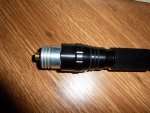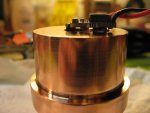icah93
0
- Joined
- Feb 5, 2009
- Messages
- 73
- Points
- 8
Hi Members,
recently I rebuilt my 445 project and I exchanged my linear driver to the X-boost v7 micro (capable of ~1.8A).
I am powering it from a 18650 cell.
Everything is fine till ~30 seconds, then the light begin flickering, starting slow, then getting faster.
My driver is not heatsinked yet, and set to 1.5A.
The circuit was measured before mounting it to the host, and 1.5A flew through the diode for sure.
Is that possible that the flickering is caused by the inbuilt thermal protection?
Have anybody experienced the same behavior with this driver in the past?
recently I rebuilt my 445 project and I exchanged my linear driver to the X-boost v7 micro (capable of ~1.8A).
I am powering it from a 18650 cell.
Everything is fine till ~30 seconds, then the light begin flickering, starting slow, then getting faster.
My driver is not heatsinked yet, and set to 1.5A.
The circuit was measured before mounting it to the host, and 1.5A flew through the diode for sure.
Is that possible that the flickering is caused by the inbuilt thermal protection?
Have anybody experienced the same behavior with this driver in the past?








